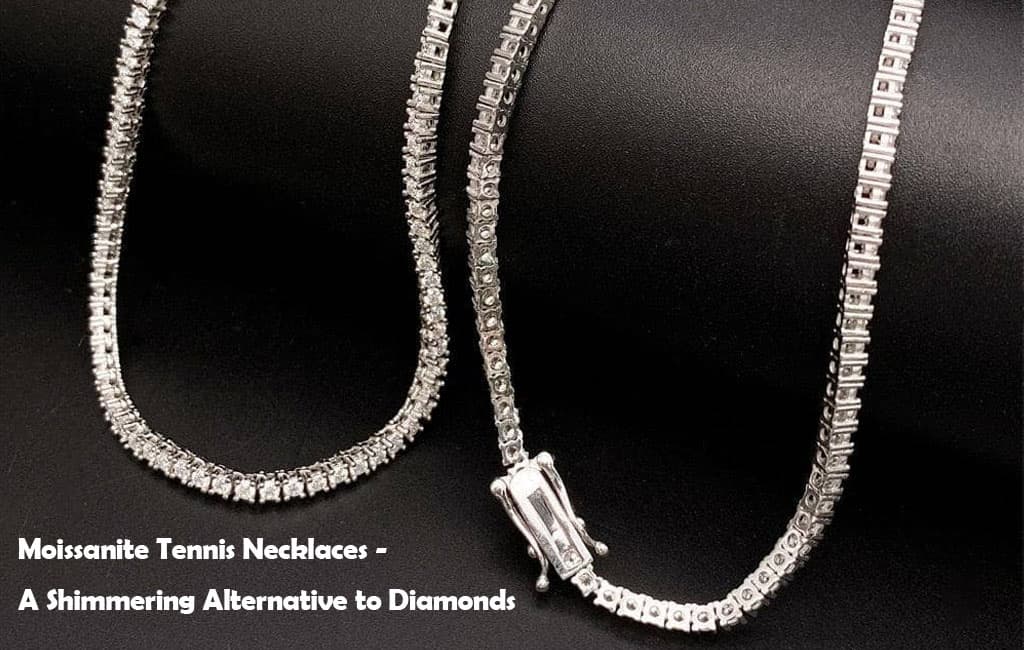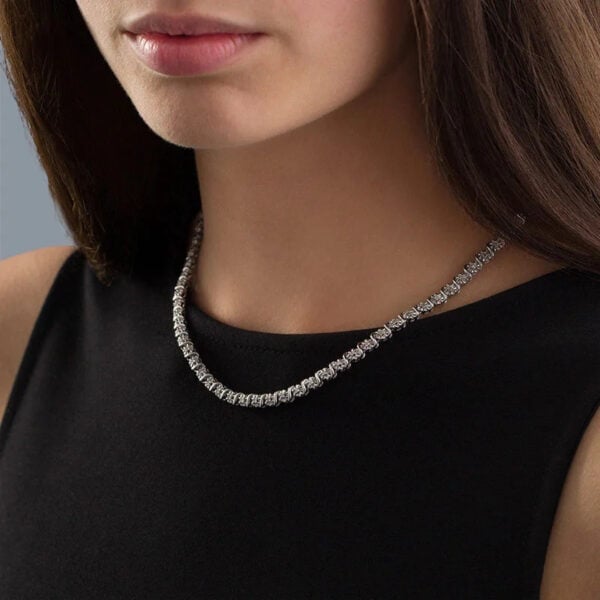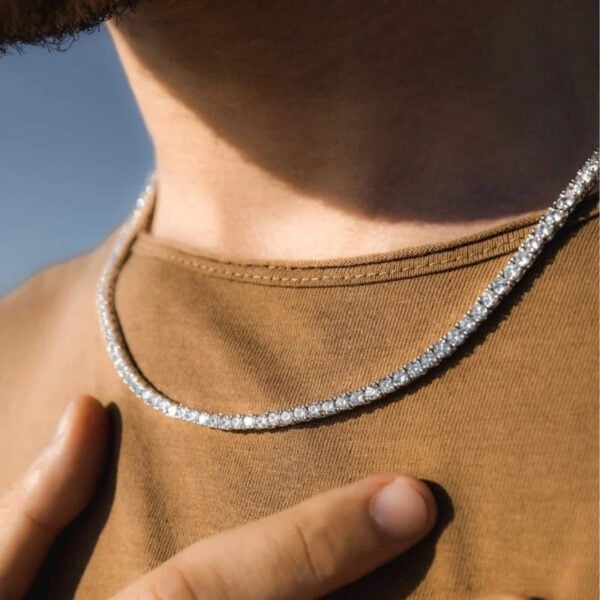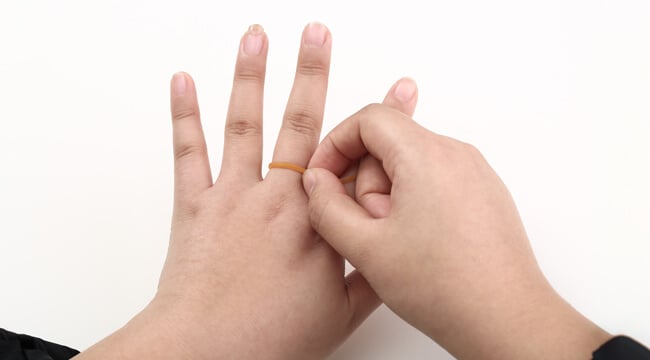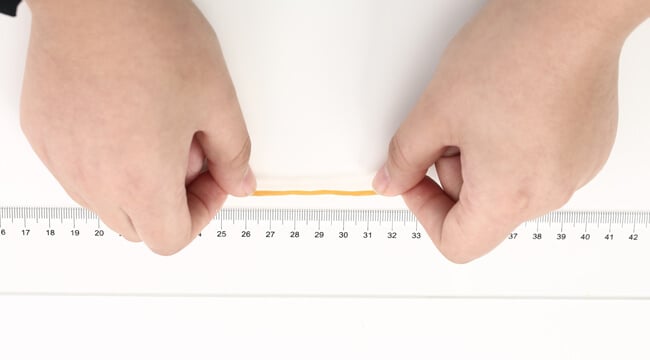In recent years, Moissanite Tennis Necklaces have emerged as a captivating and cost-effective alternative to conventional diamond necklaces. These exquisite pieces of jewelry have won the hearts of many due to their brilliance, durability, and ethical appeal. In this comprehensive guide, we will delve into the world of Moissanite Tennis Necklaces, exploring what sets them apart, why they deserve your consideration, how to choose the perfect one, and much more.
What are Moissanite Tennis Necklaces?
Moissanite Tennis Necklaces are distinguished by their continuous row of moissanite gemstones that elegantly encircle the neck, without any visible gaps, ensuring a seamless and flexible fit. These necklaces can vary in length, from choker-style pieces to longer, more dramatic ones. The flexibility of the strand allows the necklace to gracefully conform to the contours of the neck and chest, endowing it with an organic quality that is utterly mesmerizing.
Why Do They Call it a Tennis Necklace?
Curiously, the term “tennis” was initially associated with a bracelet design rather than necklaces. The story unfolds at the 1987 US Open, where renowned tennis star Chris Evert famously halted her match to search for her lost diamond bracelet, which had slipped off her wrist. She insisted on finding it before resuming the game, playfully referring to it as her “tennis bracelet” in a post-game interview. This incident made headlines and established the “tennis” moniker for both bracelets and necklaces in this style.
Can You Wear a Moissanite Tennis Necklace Every Day?
The resounding answer is yes, and it is not only possible but also practical. These necklaces are designed to be both robust and versatile, making them perfect for daily wear. Their exceptional craftsmanship and timeless elegance make them a valuable addition to any jewelry collection. Moissanite Tennis Necklaces seamlessly complement a diverse range of outfits, from casual attire to formal ensembles, infusing a touch of luxury into your everyday style. The durability of these necklaces is a key feature, crafted with sturdy settings that securely cradle the moissanite stones, ensuring they can endure the demands of daily life without losing their charm.
These necklaces can also serve as an investment, maintaining their value over time as they remain a classic piece that never goes out of style. To preserve their beauty and worth, regular inspections and proper care are advised, especially if you plan to wear your Moissanite Tennis Necklace daily.
How To Layer A Tennis Necklace?
When it comes to styling and layering your Moissanite Tennis Necklace, less is often more. While the temptation may be to adorn yourself with all your cherished pieces, simplicity can enhance sophistication. Limiting your layering to up to three necklaces, including the Moissanite Tennis Necklace, strikes the right balance. You can experiment with various chain styles, combining delicate and chunky chains to create a harmonious ensemble. Remember that Moissanite Tennis Necklaces hold their own remarkable allure, so overloading them with excessive adornments can detract from their appeal.
Consider the lengths of your necklaces in your layering strategy, aiming to keep each piece approximately two inches apart for an elegant effect. Position the Moissanite Tennis Necklace at the top or bottom of the stack, as these are the areas where attention naturally gravitates, allowing you and those around you to appreciate its beauty.
Mixing metals is entirely acceptable when layering your Moissanite Tennis Necklace. The statement piece can stand out beautifully, even with a different metal color. To infuse a dynamic element into your necklace stack, consider experimenting with various stone colors, but maintain a degree of uniformity in stone size to prevent an overly flamboyant appearance.
How To Prevent A Moissanite Tennis Necklace From Flipping?
One common challenge with Moissanite Tennis Necklaces is their propensity to flip due to the lightweight nature of the simple strand of Moissanite gems. Unlike other jewelry pieces with heavy pendants that help anchor them in place, these necklaces can sometimes require some finesse to prevent flipping.
Shortening the necklace can be an effective solution, increasing the chain’s tension and reducing the likelihood of flipping. Seek assistance from a skilled jeweler to trim your piece or inquire about this feature when making a purchase.
Opting for a larger moissanite-carat size not only adds more shimmer and sophistication to your overall look but also increases the necklace’s weight, making it less likely to flip.
For a more permanent solution, you can have your Moissanite Tennis Necklace soldered in place by a skilled jeweler. This eliminates the necklace’s flexibility but significantly reduces the chance of flipping.
Consider a graduated design, where the central stone is larger than the rest, as this added weight in the center minimizes the risk of flipping.
Continue to learn more about How to Keep a Tennis Necklace From Flipping Over
Conclusion
Moissanite Tennis Necklaces present a brilliant and ethical alternative to traditional diamond necklaces. With their affordability, sustainability, and stunning beauty, they are an excellent choice for anyone seeking to infuse elegance into their jewelry collection. Embrace the shimmering allure of Moissanite Tennis Necklaces and make a statement wherever you go. These necklaces are not just pieces of jewelry; they are timeless symbols of beauty, versatility, and enduring style.

